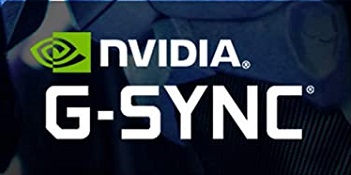What is Gsync?
Gsync was first introduced back in 2013 and became a strong competitor to AMD’s Freesync. Monitors that feature NVIDIA’s G-Sync have a chip inside of them that makes variable refresh rate and variable overdrive available to the user, given that they have a compatible GPU.
Currently there are three generations of G-Sync modules:
1. v1 with Displayport (1.2)
2. v1 with Displayport (1.2) and HDMI (1.4)
3. v2 with Displayport (1.2) and HDMI (2.0)
Having variable refresh rate or VRR allows your monitor to change its refresh rate and match it to the graphics card’s frame rate, resulting in any and all screen tearing to be terminated. For example if you are using a 144Hz gaming monitor and you are getting 75 frames in a game, G-Sync will change the monitor refresh rate to 75Hz thus eliminating the threat of screen tearing. G-Sync checks the GPU’s frame rate and adjusts the monitors refresh rate accordingly at regular intervals.
Variable overdrive will make sure that pixel response time is adjusted regularly, in order to avoid ghosting or pixel overshoot (at high and low FPS respectively). Furthermore G-Sync also allows you to achieve a lower input lag by replacing the regular scaler. In addition G-Sync also makes the games feel more stable by making use of ultra-low motion blur.
Alas with advantages must come disadvantages and G-Sync is no exception. One of the biggest if not the biggest disadvantage of using G-Sync is the cost, as you require a dedicated graphics card (NVIDIA’s of course) along with a monitor, which is either G-Sync or G-Sync compatible. Furthermore the connectivity options are also quite limited as G-Sync doesn’t work on USB-C, DVI or VGA ports. In addition G-Sync is more feasible for professional or intense gamers because if you play light or casual games, you won’t be making use of half of the features that G-Sync has to offer and you will end up with an expensive gaming setup that you don’t make full use of. Lastly (some people might not classify it as a disadvantage but)once you start using G-Sync, going back to playing games without any adaptive sync technologies won’t deliver the same gaming experience.
Requirements
In order to make use of G-Sync, you will need a G-Sync or G-Sync compatible (monitors that are certified by NVIDIA) monitors along with a NVIDIA graphics card (GTX 650 Ti Boost or above) connected with a Displayport.
Newer monitors such as the Acer XB273X, allows the user to use G-Sync coupled with an AMD graphics card via Displayport and features HDMI-VRR for consoles.
You can also set up and configure G-sync yourself as it is a very straightforward process. However you can encounter some problems with Gsync but that isn’t unusual and most of the times its easy to solve.
If G-Sync doesn’t appeal to the gamer inside of you, the following list shows all the FreeSync monitors and you can choose the monitor that appeals to you the most.

